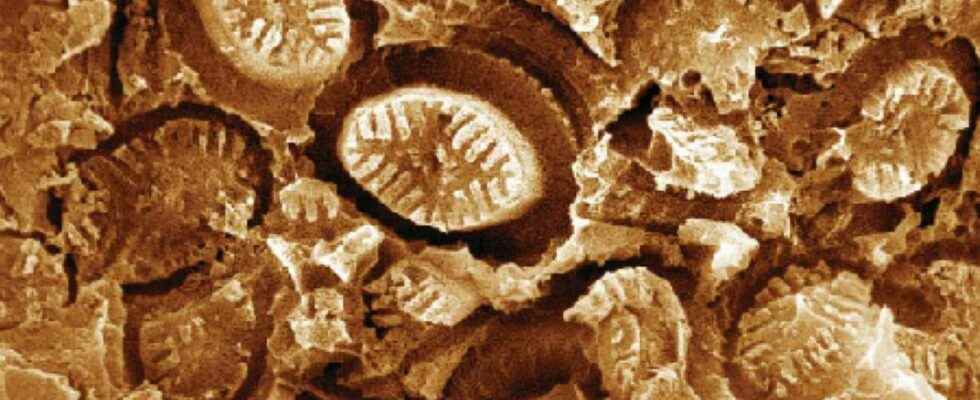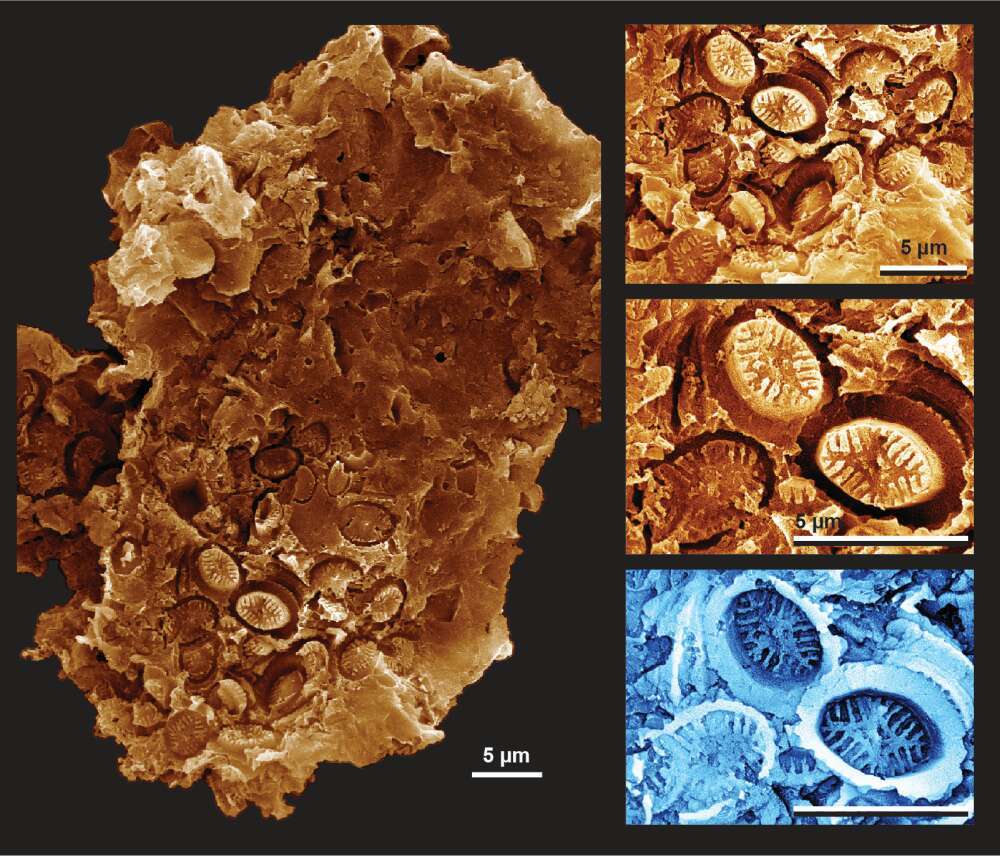The probability of finding a vertebrate fossil is low, so imagine what the probability of discovering the tiny imprints of microalgae witnessing the warming and acidification of the oceans in the Jurassic and Cretaceous! A new study describes the discovery of tiny algae with calcified skeletons in the form of “ghost” plankton.
The last evidence of the existence of an organism on the surface of the Earth never cease to surprise paleontologists… A research team has indeed just publish in the newspaper Science the discovery of microfossils unusual to say the least. These fossils are those of coccolithophores, algae unicellular and microscopic marine (<1 mm in diameter) which still populate the oceans today and which have the particularity of producing plates limestone (the coccoliths) at the periphery of the cell. However, these microalgae were absent from the fossil record during the three major periods of global warming that took place during the Jurassic and Cretaceousi.e. 94, 120 and 183 million years ago.
Tiny traces of “ghost” plankton
The authors of the study, however, provide proof of the presence of these microalgae during such episodes, in the form of “ghost” fossils. These are in fact the prints that this plankton calcified has left on surfaces of pollen fossilized at the bottom of the sea!
One of the authors, Dr. Twitchett, indicates that this plankton was abundant, diverse and thriving during previous climate warming events. Dr. Slater adds that the planktonic microalgae blooms during past warmings have contributed to the expansion of dead zones in the marine environment and that a similar trend could emerge in the current context, which remains to be verified.
Interested in what you just read?

